- Data Basin |
- Datasets |
- Natural Communities and Land Cover Types of Santa Clara County, California
Natural Communities and Land Cover Types of Santa Clara County, California
- Description:
A land cover type is defined as the dominant character of the land surface discernible from aerial photographs or other remotely sensed imagery, as determined by vegetation, water, or human uses. Land cover types are widely used to describe a variety of landscape characteristics, including natural communities, wetlands and streams, species’ habitat, ecosystem function, and biological diversity. Land cover is often a function of a variety of physical and biological factors such as plant and animal associations, soil type, topography, climate, and land uses.
The land cover dataset is an important tool for developing this East Bay RCIS’s conservation strategy (Chapter 3). Amongst its many uses, the land cover data were used to model focal species’ habitat, identify gaps in conservation of habitat and other natural resources, set measurable conservation goals and objectives, and identify conservation priorities to achieve the goals and objectives.
- Data Provided By:
-
• Detailed land cover mapping conducted in 2004 based on aerial photos from 2000, 2003, and 2004 for the ECCC HCP/NCCP in East Contra Costa County (Jones & Stokes 2006).
• Detailed land cover mapping conducted in 2009 based on aerial photos from 2005 and 2007 for the East Alameda County Conservation Strategy (EACCS) in eastern Alameda County (ICF International 2010).
• Land cover data compiled by the Conservation Lands Network (CLN) for the entire nine-county Bay Area (from 2011). This land cover map is widely used throughout the Bay Area by open space and planning agencies (Bay Area Open Space Council 2011).
• California Department of Forestry and Fire Protection Fire and Resource Assessment Program (FRAP). This statewide map of best available land cover data from 1990 to 2014 is crosswalked into the California Wildlife Habitat Relationships system. The land cover map is widely used throughout California by open space and planning agencies (CalFire Fire Resource and Assessment Program 2016).
• The Bay Area Aquatic Resource Inventory, version 2.0 (BAARI) and wetlands and baylands datasets. These detailed base maps of the Bay Area’s aquatic features were mapped by the San Francisco Estuary Institute from 2009 to 2016 and based on aerial imagery and other data sources (Bay Area Aquatic Resource Inventory 2016a, 2016b).
• National Wetlands Inventory, version 2.0. This version delineates the areal extent of wetlands and surface waters (U.S. Fish and Wildlife Service 2016).
• Serpentine map units from the Soil Survey Geographic (SSURGO) databases covering Alameda County and Contra Costa County (U.S. Department of Agriculture 2016a, 2016b, 2016c), used to identify and classify serpentine land cover types.
- Content date:
- not specified
- Contact Organization:
- ICF
- Contact Person(s):
- Use Constraints:
 This work is licensed under a Creative Commons Attribution 3.0 License.
This work is licensed under a Creative Commons Attribution 3.0 License.
- Layer:
- Layer Type:
- Currently Visible Layer:
- All Layer Options:
- Layers in this dataset are based on combinations of the following options. You may choose from these options to select a specific layer on the map page.
- Description:
- Spatial Resolution:
- Credits:
- Citation:
- Purpose:
- Methods:
- References:
- Other Information:
- Time Period:
- Layer Accuracy:
- Attribute Accuracy:
- Dataset Type:
-
Layer Package
About the Uploader
We provide advanced conservation science, technology, and planning to empower our partners in solving the world’s critical ecological challenges


 Brent Read
Brent Read
